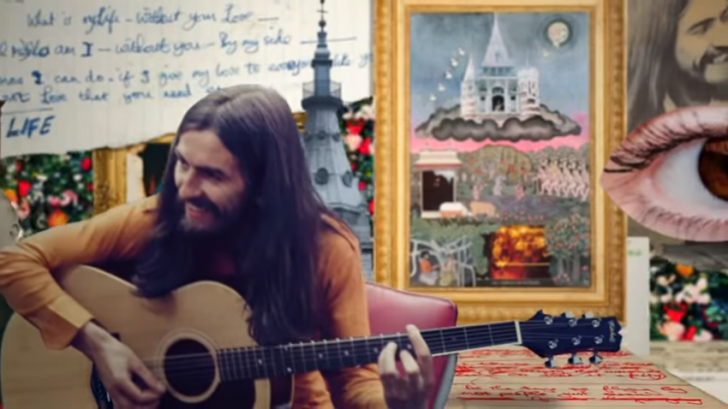George Harrison’s acoustic demo of “Love You To” showcases the origins of The Beatles’ trippy masterpiece from Revolver, which was inspired by Indian classical music. Despite the lack of traditional Indian instruments, Harrison’s early version of the song called “Granny Smith” already had the harmonic elements that would later be enhanced with sitars, tablas, and tamburas played by musicians from the Asian Music Circle. While McCartney and Starr contributed some parts, the final version of “Love You To” was mainly the result of Harrison’s embrace of Indian music.
“To me, [Indian classical music] is the only really great music now, and it makes Western three-or-four-beat type stuff seem somehow dead,” Harrison explained in 1966. “You can get so much more out of it if you are prepared really to concentrate and listen.”
George Harrison’s acoustic demo of ‘Love You To’ reveals that Paul McCartney was already providing the harmony vocal, while Harrison played the guitar. However, Harrison always intended the song to be played on a sitar, an instrument he would not seriously study until a year later.
“I wrote ‘Love You To’ on the sitar, because the sitar sounded so nice and my interest was getting deeper all the time,” Harrison claimed. “I wanted to write a tune that was specifically for the sitar. Also it had a tabla part, and that was the first time we used a tabla player.”
In 1965, Harrison discovered the sitar while filming Help!, and later purchased one for himself. He incorporated the instrument into The Beatles’ track ‘Norwegian Wood (This Bird Has Flown)’ on the album Rubber Soul, but was dissatisfied with his amateurish playing. He worked to improve his skills on the instrument and eventually became friends with sitar virtuoso Ravi Shankar. Harrison went on to compose songs like ‘Within You Without You’ and ‘The Inner Light’ featuring the sitar.
Listen to the song below:

